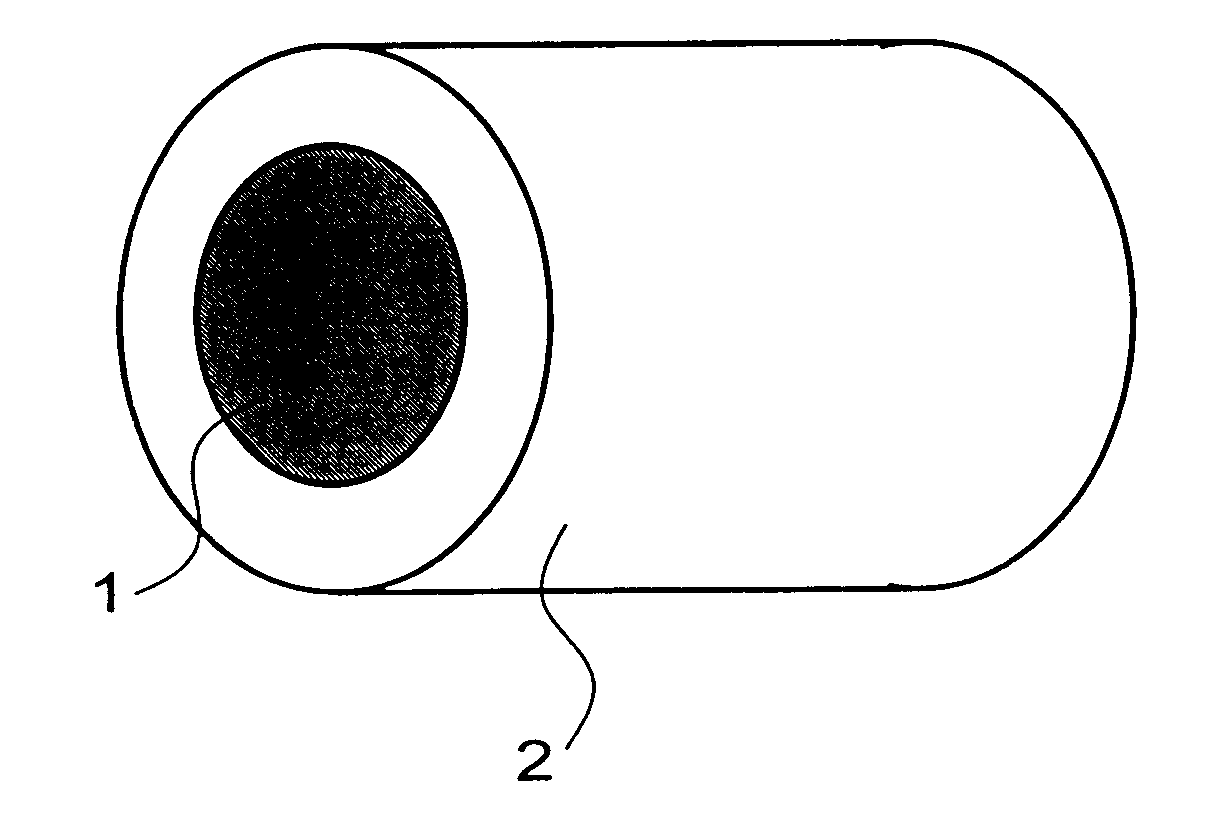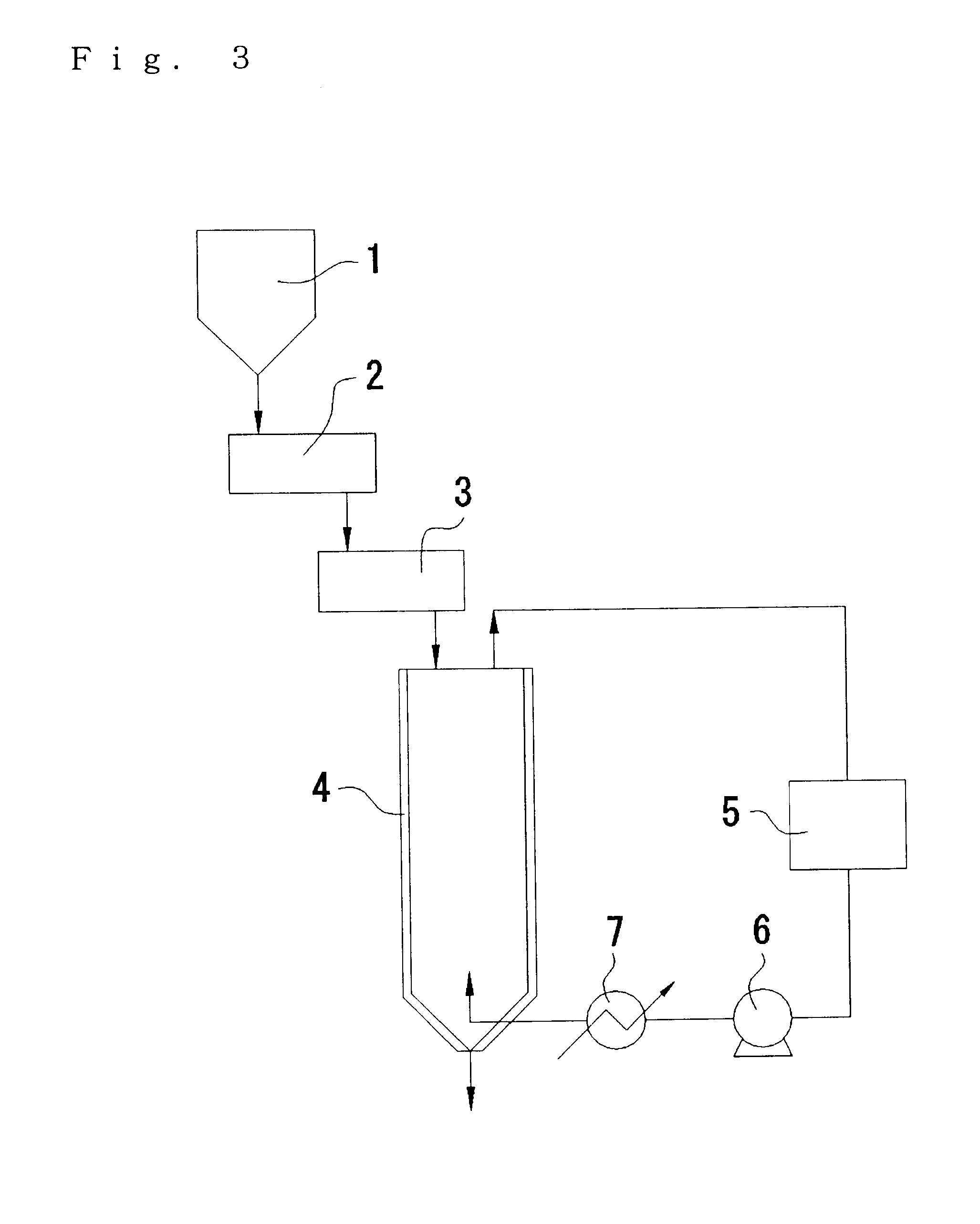Process for preparing polyhydroxycarboxylic acid
a technology of polyhydroxycarboxylic acid and process, applied in the direction of coatings, etc., can solve the problems of poor processing stability, difficult to handle powdery form, and inability to obtain uniform particle shapes by strand cutting systems,
- Summary
- Abstract
- Description
- Claims
- Application Information
AI Technical Summary
Benefits of technology
Problems solved by technology
Method used
Image
Examples
example 1
Liquid Phase Polycondensation Steps
102.3 g of 88% L-lactic acid and 410 g of stannous oxide were charged in a drum of 0.5 m.sup.3 volume equipped with a stirrer, the temperature was elevated from a room temperature to 160.degree. C. in one hour under an ambient pressure nitrogen atmosphere and, after keeping at 160.degree. C. for one hour, pressure was gradually reduced from the ambient pressure to 10 mmHg in two hours while maintaining the temperature at 160.degree. C. and reaction was conducted, finally, at 160.degree. C. / 10 mmHg for 10 hours. Mw was 10,000 in this case.
Pelleting Step
The molten polymer was supplied at 140 kg / Hr by way of a gear pump to a droplet pelleting machine ROTOFORMER 3,000 type (trade name of products manufactured by SANDVIK Co.). The pelleting machine had dropping outer shell width of 480 mm, the dropping nozzle diameter of 2.0 mm and the dropping nozzle pitch of 7 mm, and the shell temperature was 170.degree. C. Further, the cooling belt had a belt width ...
example 2
When the solid phase polycondensation reaction step in Example 1 reached 20 hr, the pellets of the polylactic acid were recovered from the solid phase polycondensation reaction vessel 4.
In this stage, the polylactic acid had an endothermic peak area of 60 J / g and an endothermic start temperature of 157.degree. C. The pellets were again supplied to the solid phase polycondensation reaction vessel 4 and heated in a nitrogen atmosphere at 155.degree. C. to conduct solid phase polycondensation.
The weight average molecular weight of the resultant polylactic acid was 152,000.
In each of the steps described above, the polylactic acid did not cause fusion and could be prepared efficiently.
example 3
Pellets of liquid phase polycondensation products of polylactic acid having a weight average molecular weight of 20,000 were obtained in the same manner as in Example 1 except for changing the reaction time at 160.degree. C., 10 mmHg in the liquid phase polycondensation reaction step to 14 hours in Example 1.
In the reaction apparatus shown in FIG. 3, pellets of the liquid phase polycondensation products of the polylactic acid prepared by the method described above were supplied from one side of the horizontal continuous heating vessel 2 and stirred while being heated to 90.degree. C. The residence time in this step (A) was 20 min. The polylactic acid obtained by the step (A) had an exothermic peak area of 0 J / g and an endothermic peak area of 48 J / g as measured by a differential scanning calorimeter.
Then, the pellets of the polylactic acid prepared in the step (A) were supplied to the horizontal heating vessel 3 and stirred while being heated to 130.degree. C. The residence time in ...
PUM
| Property | Measurement | Unit |
|---|---|---|
| boiling point | aaaaa | aaaaa |
| boiling point | aaaaa | aaaaa |
| boiling point | aaaaa | aaaaa |
Abstract
Description
Claims
Application Information
 Login to View More
Login to View More - R&D
- Intellectual Property
- Life Sciences
- Materials
- Tech Scout
- Unparalleled Data Quality
- Higher Quality Content
- 60% Fewer Hallucinations
Browse by: Latest US Patents, China's latest patents, Technical Efficacy Thesaurus, Application Domain, Technology Topic, Popular Technical Reports.
© 2025 PatSnap. All rights reserved.Legal|Privacy policy|Modern Slavery Act Transparency Statement|Sitemap|About US| Contact US: help@patsnap.com



